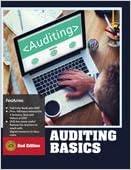Answered step by step
Verified Expert Solution
Question
1 Approved Answer
SHORTANSWERQUESTIONS 117) Match the following definitions and terms by placing the letter that identifies the best definition in the blank space next to the term.




SHORTANSWERQUESTIONS 117) Match the following definitions and terms by placing the letter that identifies the best definition in the blank space next to the term. 1. Source documents 2. Debit 3. Posting 4, Double-entry accounting . Ledger 6. Journal 7. Account S. Credit 9. T-account 10. Trial balance A. Decrease in an asset, owner withdrawal and expense account, and increase in a liab owner's capital and revenue account; recorded on the right side of a T-account. B. A record containing all the accounts of a company and their balances. -C. An accounting system where each transaction affects and is recorded in at least two accounts; the sum of the debits for each entry must equal the sum of its credits. D. A company's chronological record of each transaction in one place that shows debit for each transaction. E. An increase in an asset and expense account, and decrease in a liability, owner's cap and revenue account; recorded on the left side of a T-account. F. A record of the increases and decreases in a specific asset, liability, equity, revenue expense item G. A representation of a ledger account used to understand the effects of transactions. H. A list of accounts and their balances at a point in time. I. The process of transferring journal entry information to the ledger accounts J. Verifiable evidence that transactions have occurred used to record accounting info Provided below is a list of definitions and terms, Match them by placing the letter that identitres the best definition in the blank space next to each term 1. Debit 2. Note payable 3. Ledger 4. Journal 5. Debt ratio 6. Chart of accounts 7. Trial balance 8. Credit 9. Account balance 10. Balance column account - A. An increase in an asset, owner withdrawal, and expense account, and a decrease in a liability, owner's capital, and revenue account; recorded on the left side of a account ecrease in an asset, owner withdrawal, and expense account, and an increase in a liability, owner's capital, and revenue account; recorded on the right side of a T- account. C. IA written promise to pay a definite sum of money on a specified future date D. The difterence between total debits and total credits for an account including the F. A list of all accounts used by a company and the identification number assigned to G. T beginning balance equal the total credit balances each account. he ratio of total liabilities to total assets; used to reflect the risk associated with the company's debts An account with debit and credit columns for recording entries and another colum for showing the balance of the account after each entry A chronological record of each transaction in one place that shows debits and cre for each transaction. H. I. )Provided below is a list of definitions and terms. Match them by placing the letter that id best definition in the blank space next to each term. 1. General journal 2. Chart of accounts 3. Note receivable 4. T-account 5. Unearned revenues 6. Compound journal entry 7. Posting reference column s. Posting 9. Account 10. Trial Balance A. A simple form used as a helpful tool in understanding the effect of transactions and specific accounts. B. The most flexible type of journal, it can be used to record any kind of transaction. C. A journal entry that affects at least three accounts. D. A written promise from a customer to pay a definite sum of money on a specified f E. A record of the increases and decreases in a specific asset, liability, equity, revenue item. F. A list of all accounts used by a company and the identification number assigned to G. The process of transferring journal entry information to the ledger. H. A list of accounts and their balances at a point in time; the total debit balances she total credit balances. I. A column in journals where individual account numbers are entered when entries ledger accounts. J. Liabilities created when customers pay in advance for products or services; satis the products or services in the future. equity (OE) by placing initials (R.E.A.L. or OE) in the blanks. of the following accounts as a revenue (R). expese (E, asset 1. Salary Expense (A). Viability (1.), or 2. Cash 3. Equipment 4. Owner, Capital 5. Fees Revenue 6. Accounts Receivable 7. Accounts Payable 8. Owner, Withdrawals 9. Supplies 10. Unearned Revenuc 11. Prepaid Insurance 12. Office Furniture 21) Review the transactions below and identify with an "X" those that would be posted as a cred the ledger (The first one has been done for you): X 1. Salary Payable was increased. 2. Cash was decreased 3. Equipment was increased 4. Owner, Capital was increased 5. Salaries Expense was increased 6. Accounts Receivable was decreased 7. Unearned Revenue was increased 8. Owner, Withdrawals was increased 9. Supplies was increased 10. Building was increased 11. Utilities Expense was increased 12. Service Revenue was increased
Step by Step Solution
There are 3 Steps involved in it
Step: 1

Get Instant Access to Expert-Tailored Solutions
See step-by-step solutions with expert insights and AI powered tools for academic success
Step: 2

Step: 3

Ace Your Homework with AI
Get the answers you need in no time with our AI-driven, step-by-step assistance
Get Started


